The Gloster Meteor was the only jet fighter of Britain and the Allied forces to have ever participated in the aerial combat operations during the World War II. The development of this fighter jet heavily relied on the development of its turbojet engines that were developed by Sir Frank Whittle and his company named “Powers Jet Ltd.”
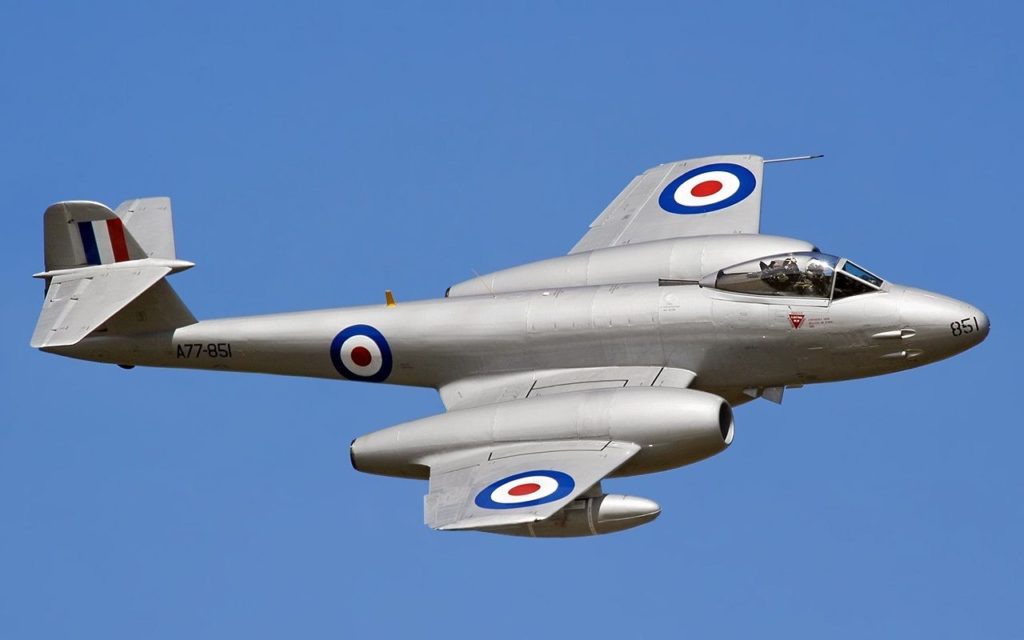
The development of this aircraft started back in 1940 with the work on the engine design starting back in 1936. The very first flight taken by Gloster Meteor was back in 1943 and the commencement of its in-service operations started back in July of 1944. The aircraft was designated to the No. 616 Squadron RAF. Although Gloster Meteor was not a great aircraft as per its aerodynamic design, it was still one of the earliest competent combat fighter jets.
In between 1940 to 1950 several deigns variants of the Gloster Meteor led to the advancement of the aerial technology throughout the globe. Thousand of these aircraft were developed that served not only with RAF but also with other air forces of the world for many decades.
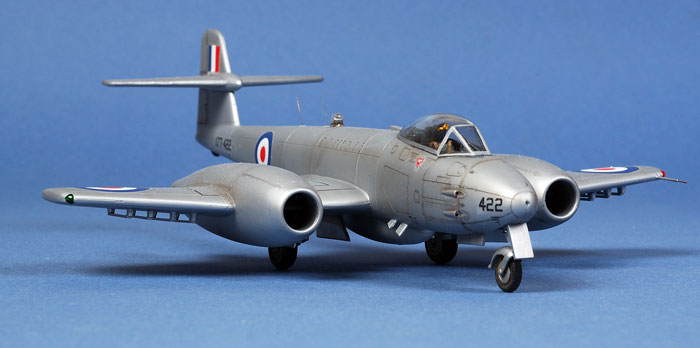
Although Gloster Meteor saw a little action during World War II it still saw considerable combat action in the Korean War under the Royal Australian Air Force (RAAF). In addition to RAF and RAAF, many of the following countries also used Gloster Meteor in their regional conflicts.
- Argentina
- Egypt
- Israel
Later variants of this aircraft were manufactured to serve as night fighters.
The aircraft also broke many of the aviation records with one being of speed broken back on November 7th, 1947 when the aircraft reached the speed of 606 mph.
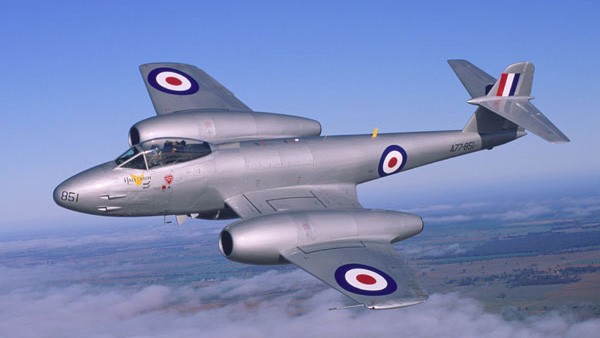
By the late 1950s, Gloster Meteor became obsolete as the rest of the world started to introduce their own jet fighters and many of them at that time had Swept Wings instead of straight wings. The Meteor was replaced in RAF by the fighter jets like Hawker Hunter and Gloster Javelin. Nowadays only two of these aircraft are in working operations as they serve the ejection seatbelt test beds for the Martin-Baker company.
For our readers today, we have gathered a bunch of amazing facts about the Gloster Meteor which are as follows.
Only Allied Combat Jet
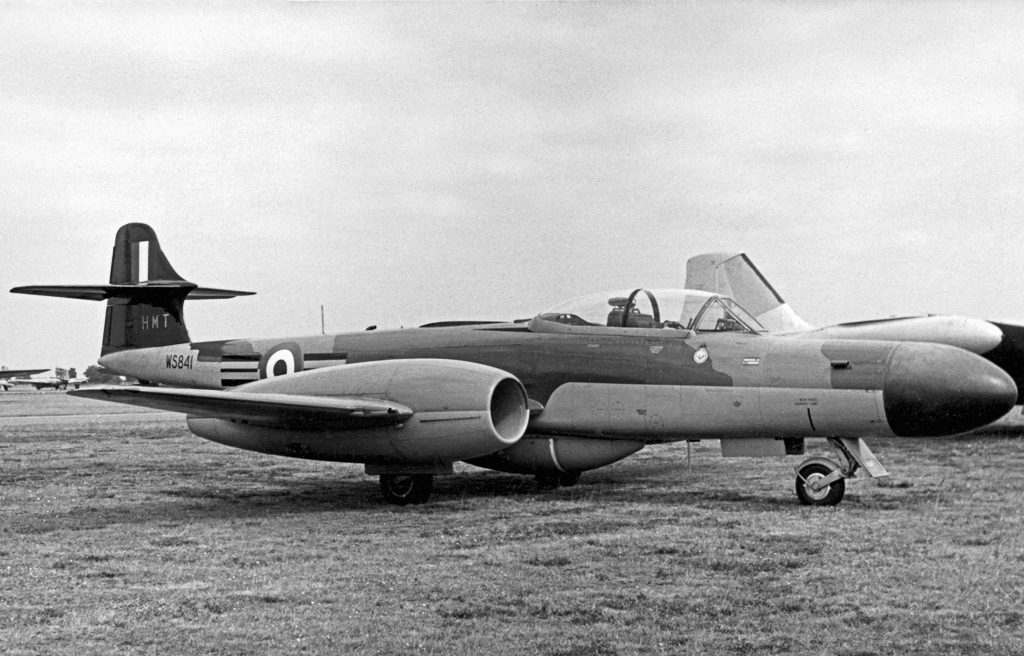
Germans had been far ahead in the rocket technology with their development of the Messerschmitt Me262 and Heinkel He162 Salamander during the World War II. In that time Gloster Meteor was the only Allied Fighter Jet to see the action in the war. During that era, most of the aerial wars were fought on propeller-driven planes.
First Operational Jet Fighter:-
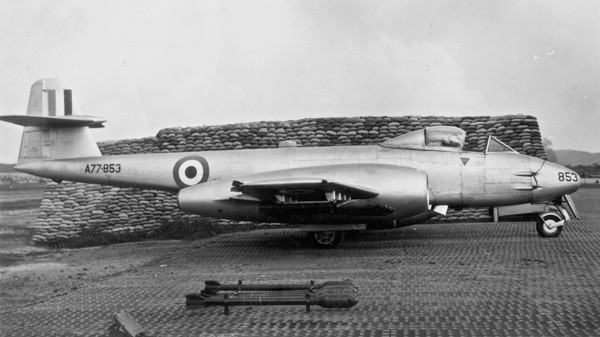
Although Germany had the technological advantage during the World War II and the had developed their jet fighter ME262, Britain still beat the German forces by few days as they entered Gloster Meteor in their squadron service.
Creator:-
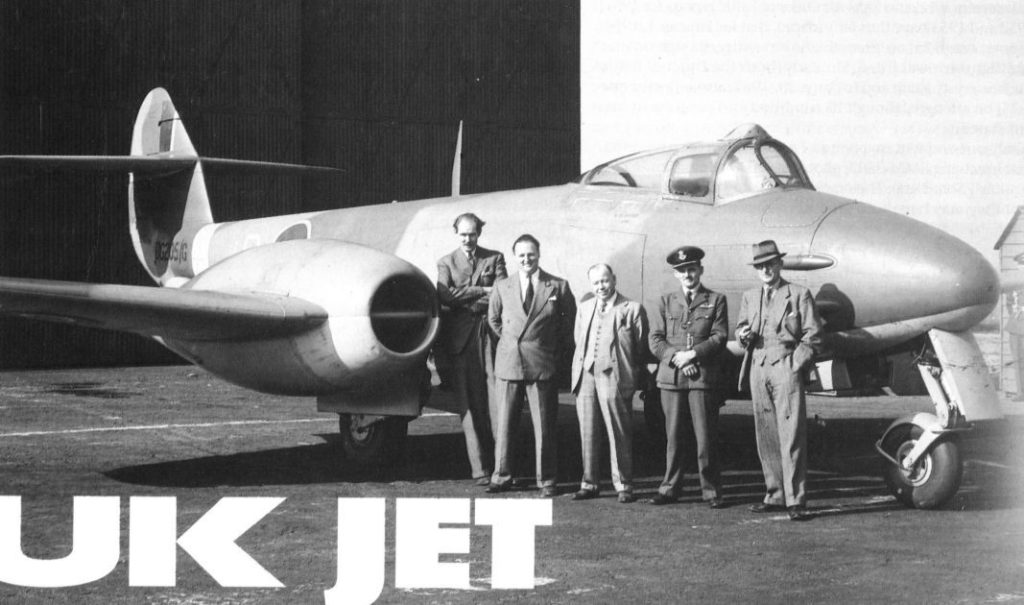
The name of the creator who designed the Gloster Meteor was George Carter ho started working on this project way back in 1936.
Engines:-

The aircraft that had poor thrust was equipped with two engines; one on each wing to provide it enough power. At that time the engines used were W2B turbojet engines from Frank Whittle. Still, they were not enough and they were later replaced by Halford H1 engines.
Later even these were replaced and the designers settled on two “Rolls Royce W2B/23 Welland Engines” that were able to produce a thrust of 1700 pounds. The Gloster Meteor took its first flight from the power o these engines and all the later models had these engines.
Weapons:-

The Gloster Meteor was equipped with four 20mm Hispano cannons. These cannons were mounted on the forward side of the cockpit on each side of the fuselage.
Speed:-
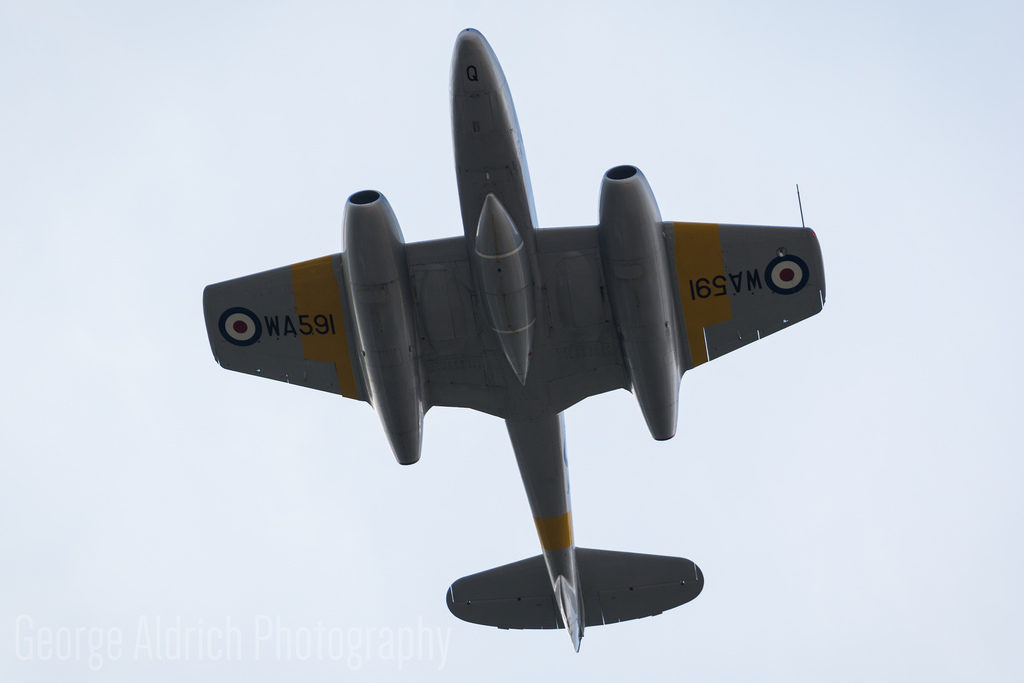
The very first Gloster Meteor model that entered in the combat action was “Mk I Meteor” and it was able to reach the speed of 410 miles per hour.
By the time, the aircraft was already becoming obsolete; it still managed to break the aerial speed record back in the late 1950s. The model was Mk 8 Meteor that reached the top speed of 610 miles per hour.
First Squadron:-
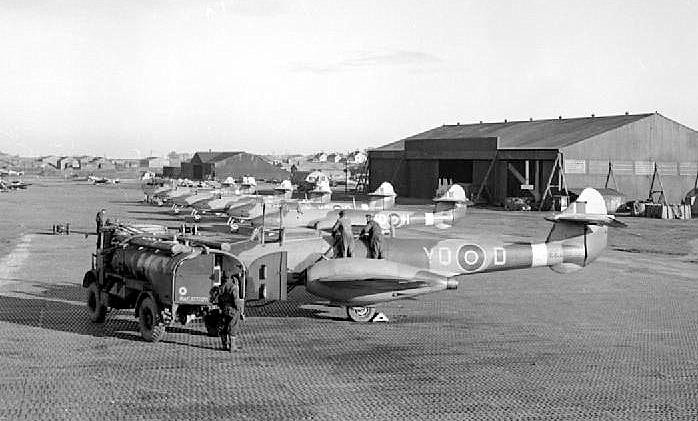
The very first RAF unit that was equipped with Gloster Meteor was the No. 616 Squadron. The squadron received the very first Gloster Meteor fighter jet back on July 12th, 1944.
First fighter jet combat:-

Allies believed that it was time to send the Gloster Meteor for a fight against Germany’s jet fighters and they deployed the aircraft over Europe.
However, in the end, World War II ended without any real confrontation of Jet VS Jet. Only jet fighter encounter that Gloster Meteor had was against a group of Focke-Wulf Fw190s. they were good planes but not nearly as good to be called great rivals for Gloster Meteor.
Exports:-

After the war, Gloster Meteor was exported to many of the Britan’s friendly countries like Belgium, Denmark, and the Netherlands. Belgium even manufactured their own Meteors after they got the manufacturing license from the British manufacturer.
Korean War:-
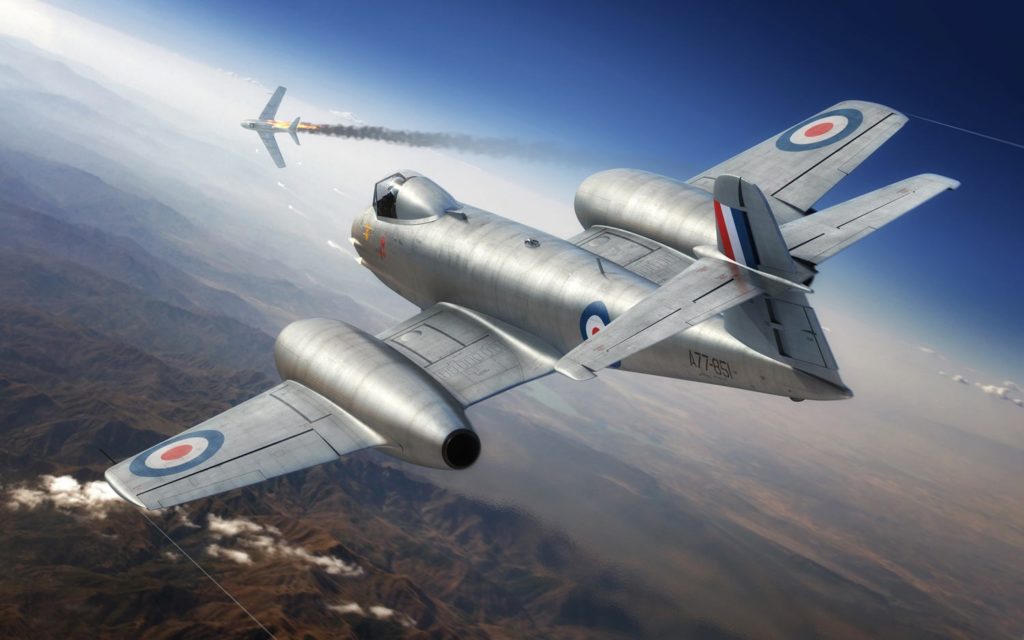
Although Gloster Meteor did not saw considerable action in the World War II, it still managed to fight in the Korean War but not under RAF. RAAF used Meteor F8s to fight against the Korean fighter jets.
Heading for retirement:-
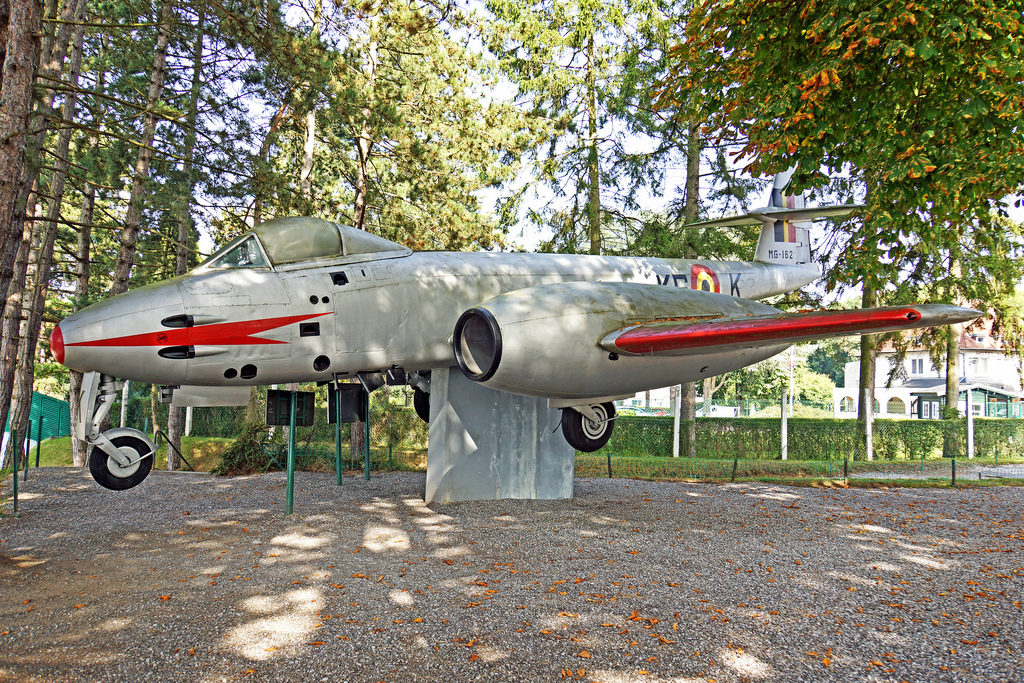
By the late 1950s, the end was near for Gloster Meteor as it was becoming obsolete. Any other air forces introduced their own jet fighters with Swept Wing design, unlike Meteor straight wing design. By 1950s ended, RAF replaced Meteor 2ith Hawker Hunter and Gloster Javelin.
Serving after retirement:-

Even after retiring from RAF, the RAF still used these aircraft as target tugs until 1977. Even to this day, a company named Martin-Baker has two o their own Gloster Meteor aircraft that they use for ejection seat testbeds.
Conclusion:-
To sum it all up, the Gloster Meteor was the earliest fighter jet that was developed by Great Britain during World War II. Unfortunately, the aircraft could not serve its purpose in the war due to it entering late. However, it still proved to be a worthy aircraft that forwarded the technological advancement for the upcoming fighter jets. Still, after being retired, the aircraft is serving some purpose in the private sector, mostly for testing.
Related Content
Amazing facts about Messerschmitt Me262; The World’s First Operational Jet Fighter





